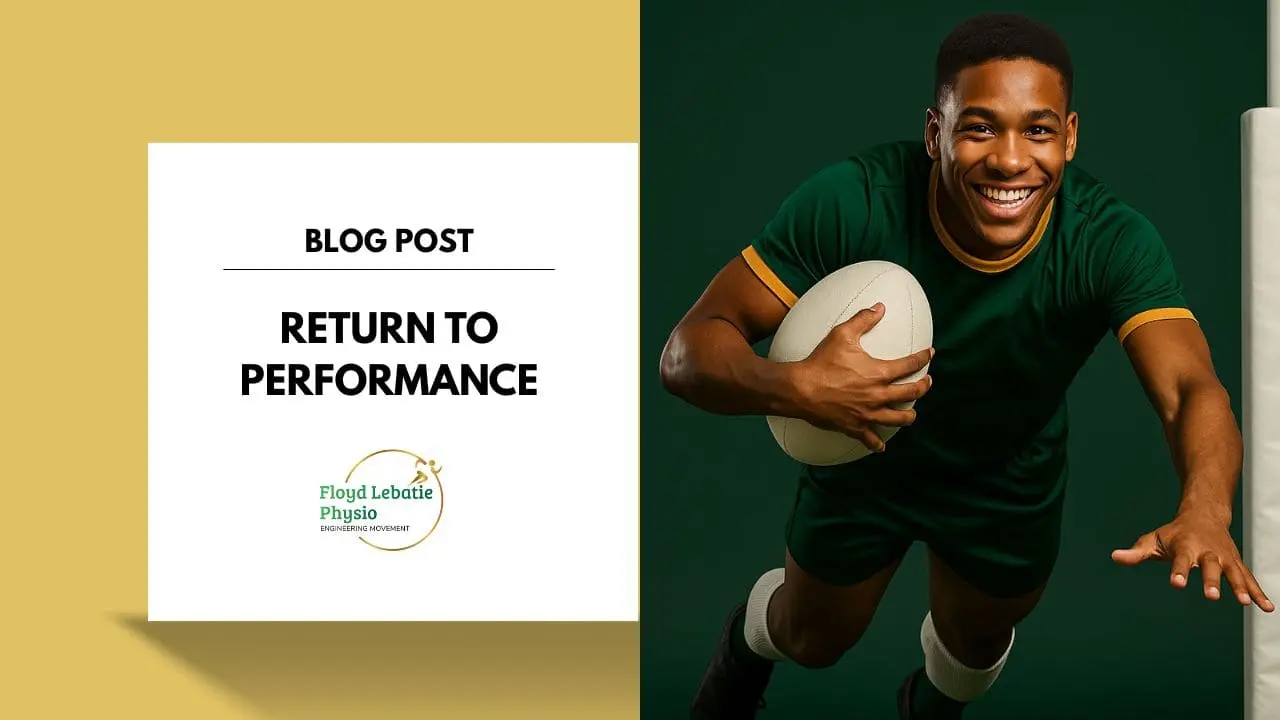Return to Performance in Sport: Your Questions Answered
At Floyd Lebatie Physiotherapy, we often hear the same questions from athletes after an injury. Here’s a simple, evidence-based blog to help you understand what “return to performance” really means.
What does “return to performance” mean?
After an injury, recovery is not just about stepping back onto the field. There are different stages to the process. First, athletes return to participation, where they can take part in some training or modified drills. Next is return to sport, which means being back in full competition. The final stage is return to performance, where the athlete is not only competing but reaching their full potential again, often performing at or even above their pre-injury level.¹
How long will it take me to get back?
There is no fixed timeline that applies to every athlete. Instead, progress should be guided by clear goals and physical benchmarks. This is called criterion-based rehabilitation. It means that athletes only move forward once they demonstrate the necessary mobility, balance, strength, power, change of direction, agility, and movement mechanics.² ³ These are all essential qualities for safe and effective sporting performance, and each one must be tested before advancing to the next stage of recovery.
Is getting “cleared to play” just one decision?
Being cleared to play is not a single “yes or no” moment. Instead, it should be seen as a series of checkpoints that take place throughout the recovery process. At each stage, the athlete’s physical condition, sport-specific skills, and psychological confidence are carefully assessed. This continuous evaluation helps reduce the risk of reinjury and ensures that the athlete is fully prepared to perform again when they return to their sport.⁴
Why does confidence matter in recovery?
Even when the body is physically ready, many athletes still face challenges with confidence and trust in their abilities. Fear of reinjury is common and can limit performance if it is not addressed. Research has shown that psychological readiness – building confidence, overcoming fear, and mentally trusting the body again – is just as important as physical healing when it comes to returning to performance. Athletes who feel mentally prepared are more likely to make a full and successful return.⁵
What gives me the best chance of success?
The best outcomes come from a complete program that combines different aspects of recovery. Physical rehabilitation is important to restore strength, mobility, and power. Functional testing ensures that the athlete can perform sport-specific movements such as sprinting, cutting, jumping, and landing safely and effectively. Finally, psychological support helps athletes rebuild their confidence and reduce fear of reinjury. Research shows that when these three areas are combined, athletes have the highest chance of success, with studies reporting that between 63% and 95% of athletes return to their pre-injury performance levels.⁶
Key Takeaways:
Returning to sport after an injury is not just about participation; it is about achieving performance again. Progress should be guided by specific goals rather than time, with multiple checkpoints to ensure readiness. Athletes must demonstrate mobility, balance, strength, power, agility, change of direction, and sound movement mechanics before progressing. Psychological confidence is just as important as physical healing, and the most effective recovery comes from a complete approach that addresses body, mind, and sport demands. At Floyd Lebatie Physiotherapy, our focus is to help athletes recover stronger, safer, and ready to perform at their best.
References:
- Ardern CL, et al. Return to Sport Continuum (2016).
- Van Melick N, et al. Evidence-based rehabilitation after ACL injury (2016).
- Buckthorpe M, Della Villa F. RTPerf model for return to performance (2020).
- Burgi CR, et al. Clearance continuum in return to play (2021).
- Podlog L, Eklund RC. Psychological readiness for return to sport (2007).
- Wiggins AJ, et al. Return to sport rates after ACL injury (2016).


